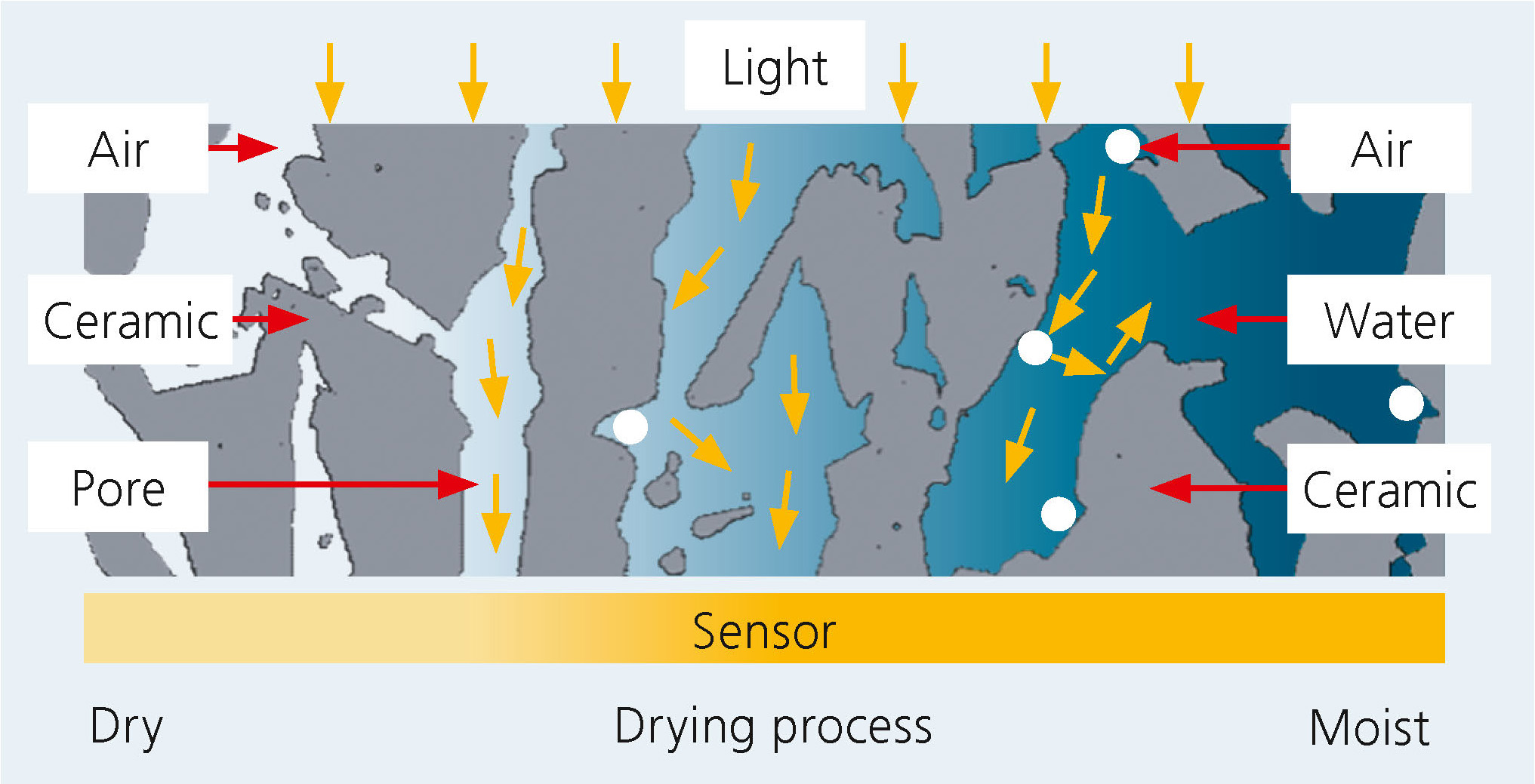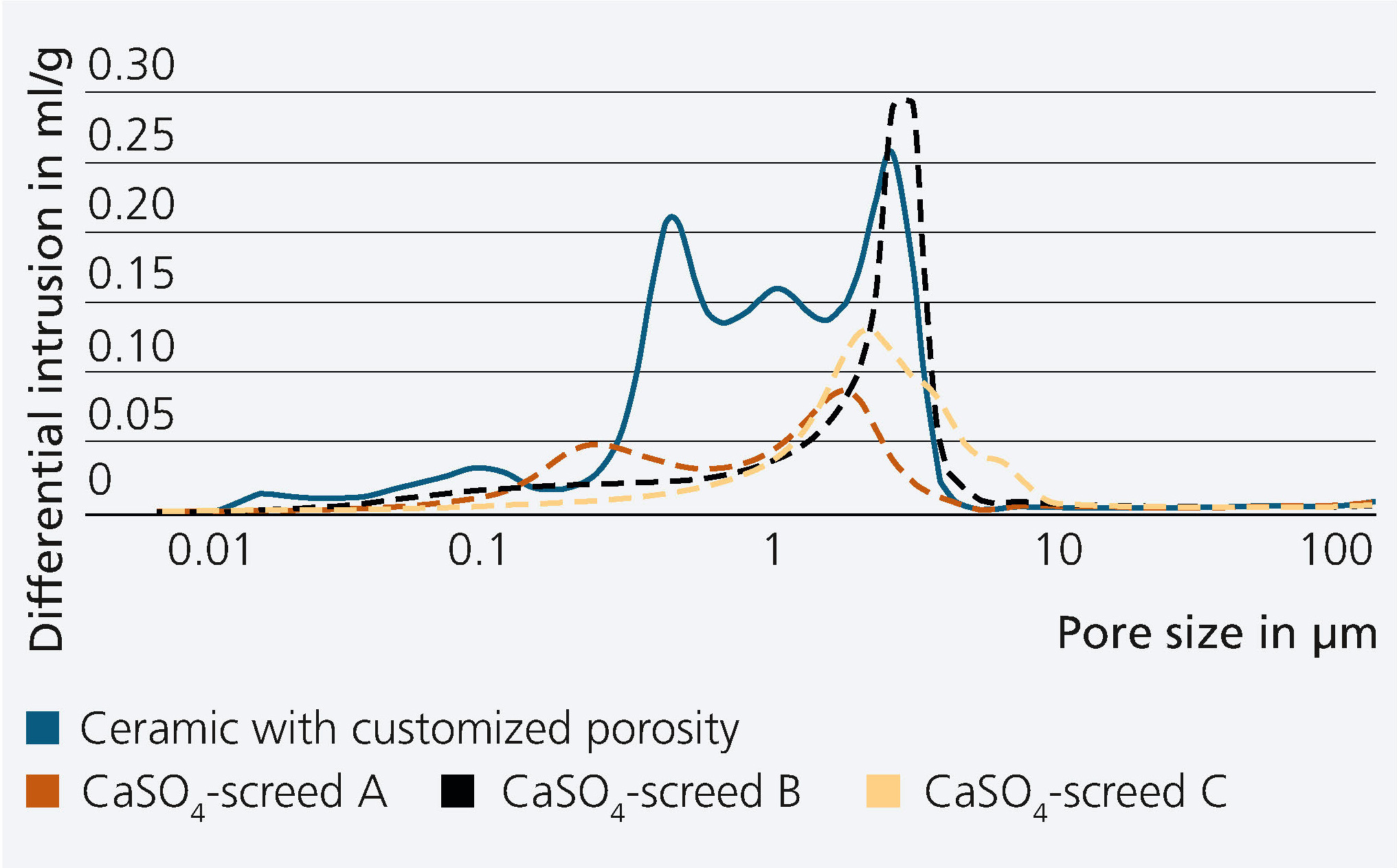
Porous ceramics for optical moisture sensors
Current research




In the construction industry, many materials such as screed are installed and processed when moist. Excess water that is not required for the setting process needs to be released into the ambient air as quickly as possible. Simple and precise monitoring of moisture levels is required to avoid covering the screed prematurely and prevent potential structural damage. Additionally, the use of energy and other resources in production can be reduced if waiting times in construction operations are minimized.
Measuring principle: detection of the moisture-dependent light transmission through a ceramic pore structure
At Fraunhofer IKTS, humidity sensors based on porous ceramics are being developed that utilize the improved light conduction of water-filled pores. The light conduction decreases during drying and is insensitive to the salt content in the water.
Customized pore ceramics
Moisture measurement requires that the moisture in the building material (e.g. calcium sulphate screed) and in the porous ceramic are similar. The porous sensor ceramics must therefore be matched to the screeds in terms of pore size and porosity. For this purpose, the building materials are analyzed with regard to these properties and, additionally, their moisture storage function is determined. The ceramic raw materials, suitable molding and sintering steps are coordinated to meet the requirements of the building material. The sensors were tested on a laboratory scale and in application- relevant screed surfaces in calcium sulphate screeds. For screed floors whose pore structure was well matched with the pore ceramic, the moisture monitoring performed very well in accuracy until the screed was ready for covering.
Services and cooperation offered
- Characterization of the microstructure and porosity of building materials, soils, inorganic materials
- Production of ceramics that are micro- and macro-structurally adapted to the material to be analyzed
- Investigation of the drying process and monitoring via light-optical measurement on ceramic discs
The work was carried out in cooperation with the MFPA Weimar and the BV Gips e.V. as part of the AIF/IGF project 20936 BR.
Supported by



